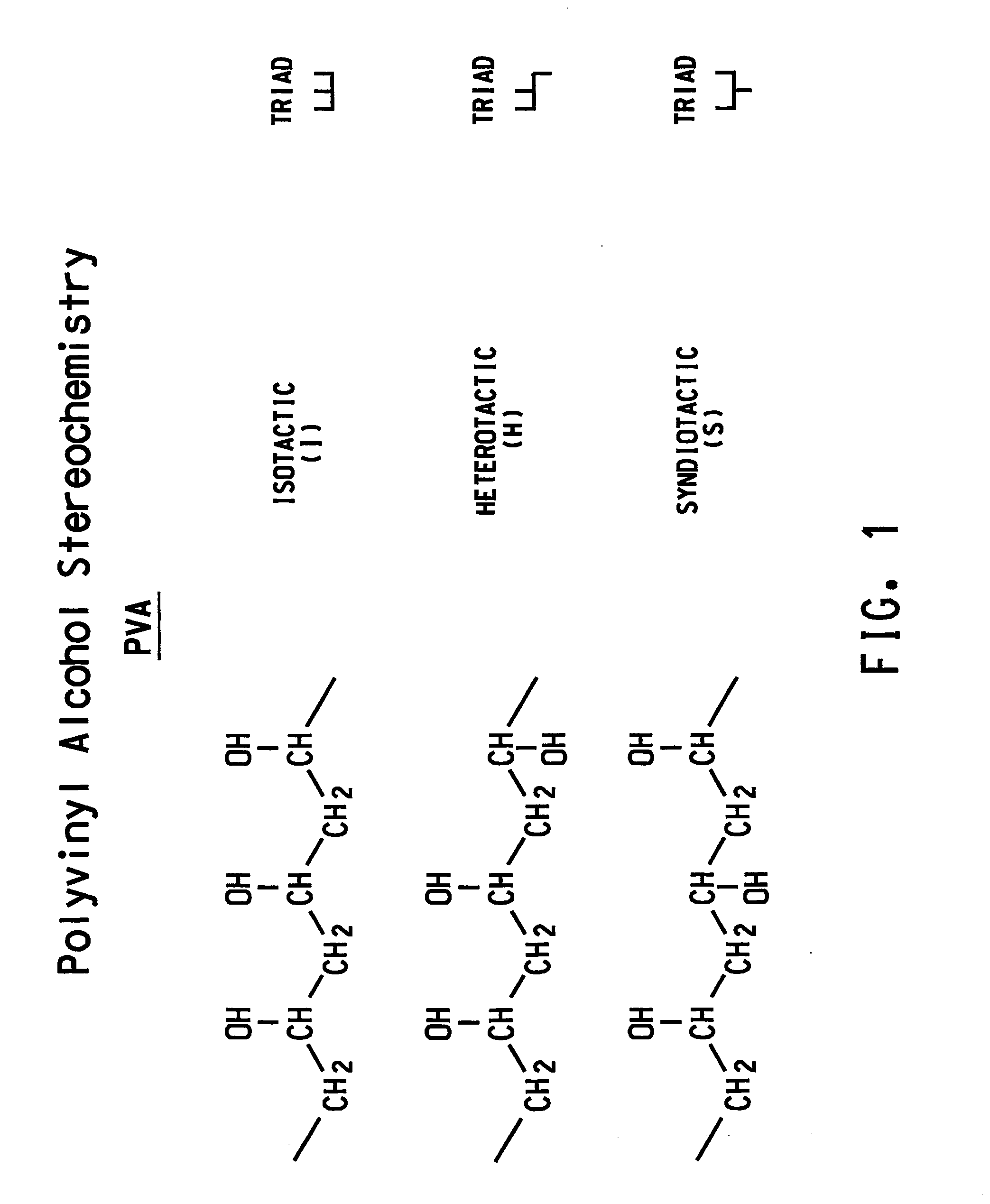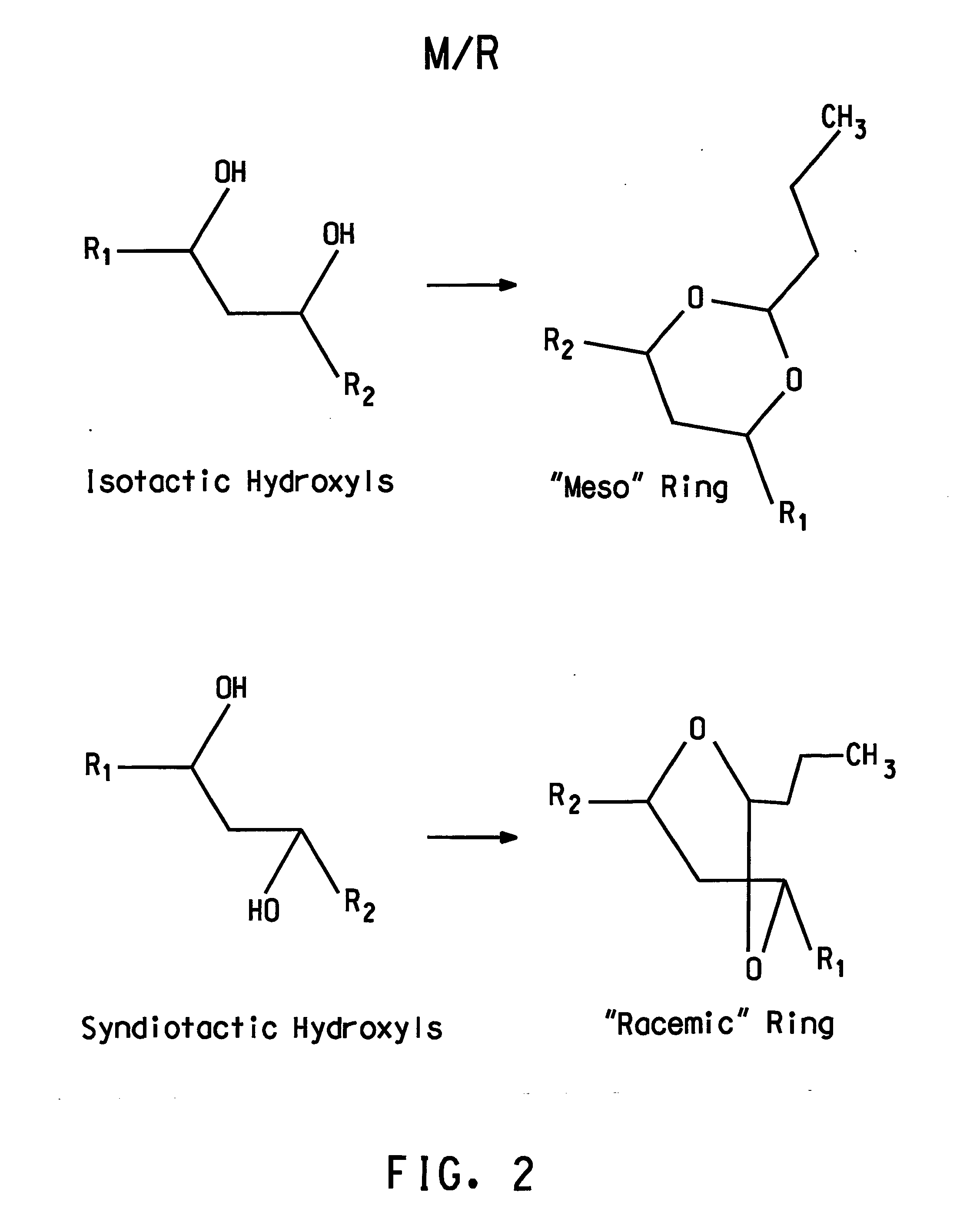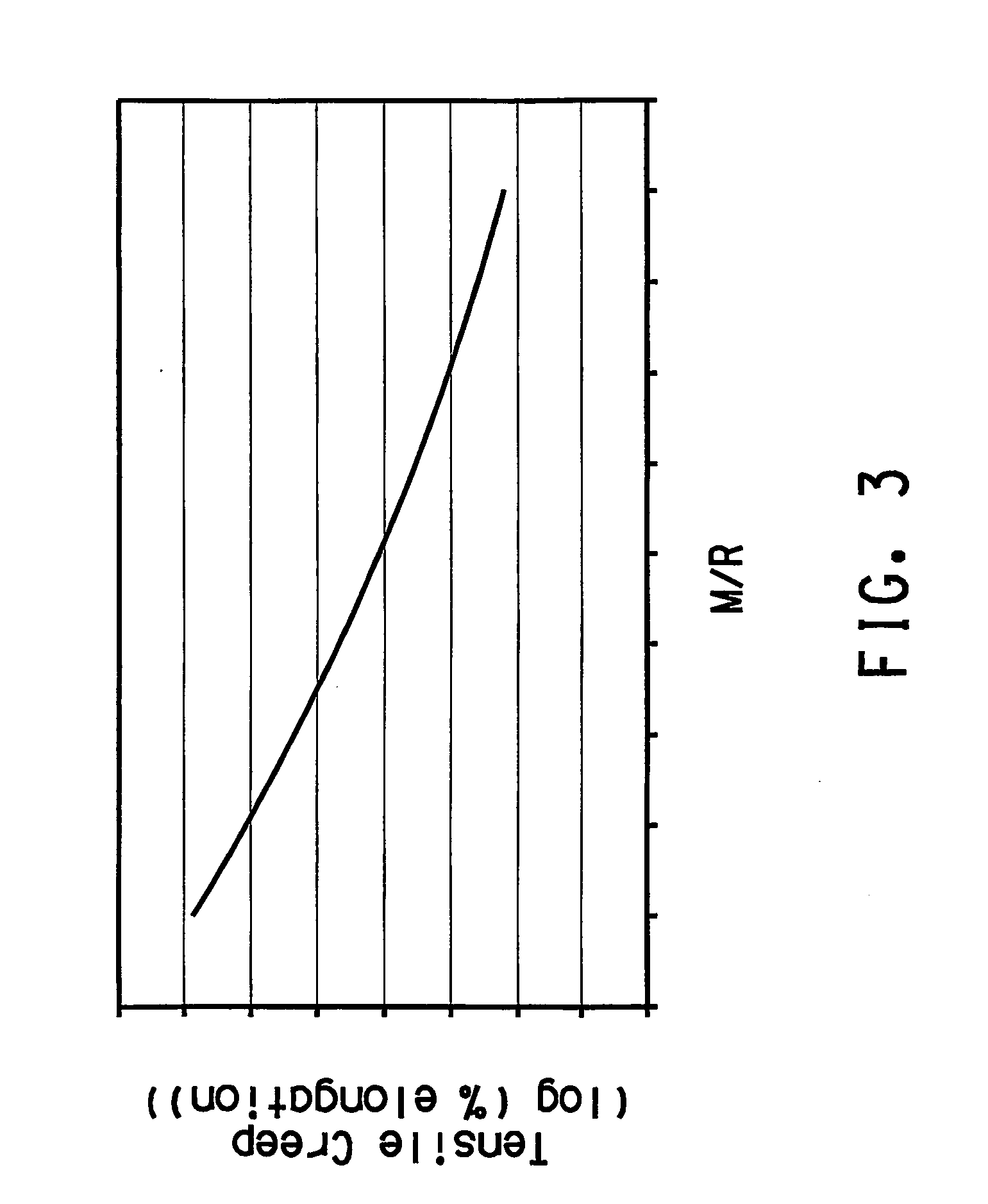Process for controlling polyvinylbutyral physical properties by controlling stereochemistry of same
- Summary
- Abstract
- Description
- Claims
- Application Information
AI Technical Summary
Benefits of technology
Problems solved by technology
Method used
Image
Examples
example 1
[0048] Poly(vinyl butyral) sheet was prepared as follows: at 90° C., a mixture comprising 32 parts by weight of poly(vinyl alcohol) (PVA), average degree of polymerization (adp) of approximately 618 and 68 parts by weight of PVA (adp approximately 1005) was dissolved in about 614 parts by weight of demineralized water. To this solution was added 1 part by weight of 88% para-toluene sulfonic acid and enough sulfuric acid to bring the dissolved PVA solution to a pH of 2. Enough n-butyraldehyde to react with the PVA to attain the PVB resin with the hydroxyl number below and 0.33 weight percent DOSS based on the dry PVA weight above and the PVA solution was charged into a vessel maintained at 90° C. After a one hour hold time, a slurry was obtained; a surface tension modifier was added to attenuate foam; and the slurry was stabilized with a sodium hydroxide solution to raise the pH to about 11. The slurry was then washed and cooled with demineralized water. A granular, white PVB resin w...
example 2
[0049] PVB resin was prepared as in Example 1 except for the changes outlined in Table 1: 34 parts of the 618 degree of polymerization PVA, 66 parts of the 1005 degree of polymerization PVA, 648 parts of demineralized water, and 2 parts of pTSA were used to make the dissolved PVA solution; and 0.15 wt % of SLS was used in the place of DOSS as the surfactant. A granular, white PVB resin with residual hydroxyl number of 19.45 was obtained. The PVB composition was formed as in Example 1 except for the plasticizer was 4G7. The resulting plasticizer content was 35.88. The M / R for the PVB resin was 2.68, and tensile creep for the sheeting was 2.42.
example 3
[0050] PVB resin was prepared as in Example 1 except for the changes outlined in Table 1: 34 parts of the 618 degree of polymerization PVA, 66 parts of the 1005 degree of polymerization PVA, 649 parts of demineralized water, and 2 parts of pTSA were used to make the dissolved PVA solution; and 0.4 wt % of SLS was used in the place of DOSS as the surfactant. A granular, white PVB resin with residual hydroxyl number of 19.18 was obtained. The PVB composition was formed as in Example 1 except for the plasticizer was 4G7. The resulting plasticizer content was 38.00. The M / R for the PVB resin was 2.89, and tensile creep for the sheeting was 2.02.
PUM
| Property | Measurement | Unit |
|---|---|---|
| Temperature | aaaaa | aaaaa |
| Temperature | aaaaa | aaaaa |
| Temperature | aaaaa | aaaaa |
Abstract
Description
Claims
Application Information
 Login to view more
Login to view more - R&D Engineer
- R&D Manager
- IP Professional
- Industry Leading Data Capabilities
- Powerful AI technology
- Patent DNA Extraction
Browse by: Latest US Patents, China's latest patents, Technical Efficacy Thesaurus, Application Domain, Technology Topic.
© 2024 PatSnap. All rights reserved.Legal|Privacy policy|Modern Slavery Act Transparency Statement|Sitemap



